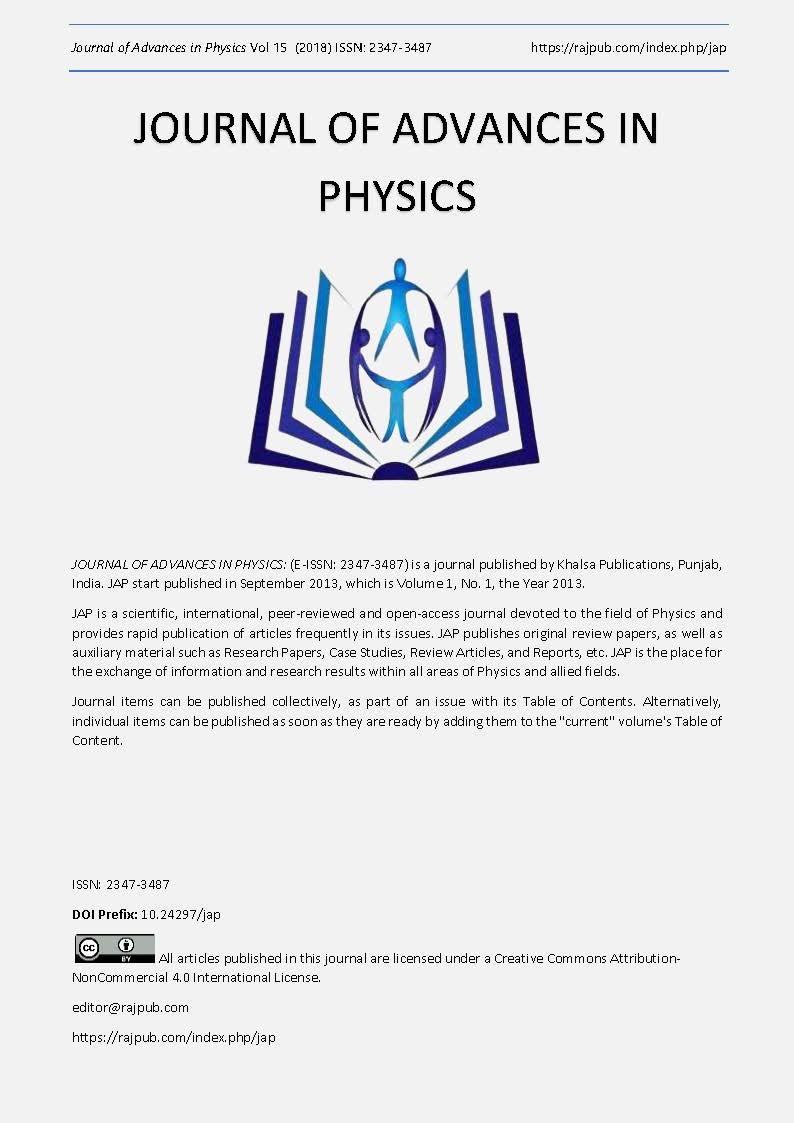Optical Absorption in Incoherent and Coherent States of a Quantum Hall System
DOI:
https://doi.org/10.24297/jap.v15i0.7844Keywords:
Two-dimensional electron gas, quantum well, magnetic field, optical absorption, resonant Rayleigh reflection, magneto-exciton, cyclotron spin-flip excitation, Bose-Einstein condensationAbstract
In connection with recent studies of extremely long-living spin-cyclotron excitations (actually magneto-excitons) in a quantum Hall electron gas, we discuss contribution to the light-absorption related to the presence of a magneto-exciton ensemble in this purely electronic system. Since the weakly interacting excitations have to obey the Bose-Einstein statistics, one can expect appearance of a coherent state in the ensemble. A comparative analysis of both incoherent and coherent cases is done. Conditions for a phase transition from the incoherent state to the coherent one are discussed.
Downloads
References
C. Kallin and B.I. Halperin, Phys. Rev. B 30, 5655 (1984).
S. Dickmann and I.V. Kukushkin, Phys. Rev. B 71, 241310(R) (2005).
L.V. Kulik, I.V. Kukushkin, S. Dickmann, V.E. Kirpichev, A.B. Van’kov, A.L. Parakhonsky, J.H. Smet, K. von Klitzing, W. Wegscheider, Phys. Rev. B 72, 073304 (2005).
S. Dickmann, Phys. Rev. Lett. 110, 166801 (2013).
L.V. Kulik , A.V. Gorbunov, A.S. Zhuravlev, V.B. Timofeev, S. Dickmann, & I.V. Kukushkin, Nature Scientific Reports 5, 10354 (2015).
A. Pinczuk, B.S. Dennis, D. Heiman, C. Kallin, L. Brey, C. Tejedor, S. Schmitt-Rink, L.N. Pfeiffer, and K.W. West, Phys. Rev. Lett. 68, 3623 (1992).
L.P. Gor’kov and I.E. Dzyaloshinskii, JETP 26, 449 (1968).
S. Dickmann, V.M. Zhilin, and D.V. Kulakovskii, JETP 101, 892 (2005).
A.B. Dzyubenko and Yu.E. Lozovik, Sov. Phys. Solid State 25, 874 (1983); ibid 26, 938 (1984).
S. Dickmann arXiv:cond-mat/0312427 (see Ref. [16] therein).
This feature is due to the symmetry of the purely electronic system considered. Formally, as applied to the case of a common two-particle magnetoexciton [7], this symmetry would correspond to electron and hole masses satisfying the me = ?mh equivalence and thus results in vanishing of the ? E 2 term in the magnetoexciton energy.
A.S. Zhuravlev, S. Dickmann, L.V. Kulik, and I.V. Kukushkin, Phys. Rev. B 89, 161301(R) (2014).
I.V. Lerner and Yu.E. Lozovik, Sov. Phys. JETP 51, 588 (1980).
S.V. Iordanski and Y. Levinson, Phys. Rev. B 53, 7308 (1996).
Norm RN was first calculated for the q = 0 case in the work of A.B. Dzyubenko and Yu.E. Lozovik, J. Phys. A, 24, 415 (1991). The calculation was based on certain commutation rules for Q†0-exciton operators. It can also be performed in a similar way based on commutation rules for the Q†q operators at arbitrary q (see, e.g., Ref. [8])
but results in the same formula.
Eq. (22) corresponds to effect of absorption amplified by factor N (and thereby also an amplified radiation in the resonance-reflection optical measurements) typical for systems of coherent quantum oscilators [cf. spontaneous radiation by a dense molecular gas: R.H. Dicke, Phys. Rev. 93, 99 (1953)].
Downloads
Published
How to Cite
Issue
Section
License
 All articles published in Journal of Advances in Linguistics are licensed under a Creative Commons Attribution 4.0 International License.
All articles published in Journal of Advances in Linguistics are licensed under a Creative Commons Attribution 4.0 International License.




